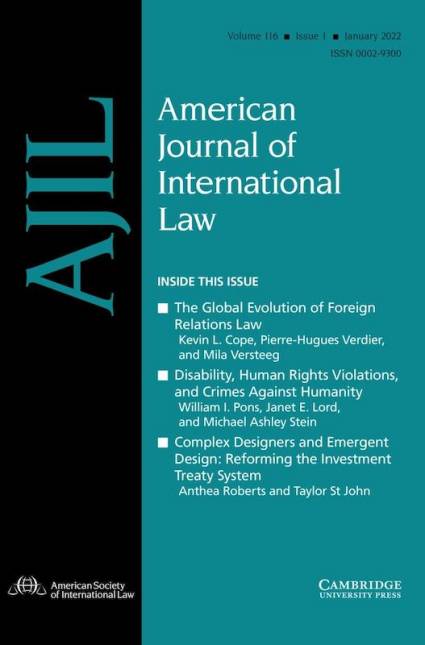Our Work
Disability Rights and Crimes Against Humanity
The need to prosecute egregious and systemic human rights violations against persons with disabilities

The enhanced risk that persons with disabilities face during armed conflict warrants prosecuting egregious, widespread human rights violations against them as crimes against humanity.
Persons with disabilities have historically been subjected to egregious human rights violations, including in armed conflict. The Nazis systematically euthanized some 300,000 persons with disabilities and forcibly sterilized nearly 400,000 more.1 The Rwandan genocide occasioned mass killings of persons with disabilities. The United Nations has also presented compelling evidence of targeted killings of persons with disabilities through infanticide in North Korea. The list goes on.
Yet despite well-documented and widespread harms, persons with disabilities have been largely neglected by the international laws, legal processes, and institutions that seek to redress those violations, including crimes against humanity. For example, the International Criminal Court lacks a policy on persons with disabilities similar to its policies on sexual and gender-based crimes and children. Only recently has the UN Security Council acknowledged the enhanced risk that persons with disabilities experience during armed conflict, in the face of growing evidence of widespread human rights violations against them.
In "Disability, Human Rights Violations, and Crimes Against Humanity," published recently in the American Journal of International Law, HPOD fellow William I. Pons, HPOD Senior Associate Janet E. Lord, and HPOD Executive Director Professor Michael Ashley Stein argue for prosecuting certain egregious and systemic human rights violations against persons with disabilities as crimes against humanity. They point to Article 11 of the UN Convention on the Rights of Persons with Disabilities, which uniquely obligates states parties to take “all necessary measures to ensure the protection and safety of persons with disabilities in situations of risk, including situations of armed conflict, humanitarian emergencies and the occurrence of natural disasters.” More broadly, Article 11 should signal to international criminal prosecutors and institutions the need to adopt a disability-inclusive reading of international criminal law.
Indeed, certain egregious human rights violations experienced by persons with disabilities may readily satisfy the definition of crimes against humanity. In some instances, persons with disabilities are directly targeted for torture, killing, forced sterilization, involuntary institutionalization, infanticide, disappearance of children with disabilities, and willful neglect of prisoners with disabilities. Other acts disparately impact them, such as attacks on or destruction of rehabilitation centers, specialized schools, and psychiatric hospitals. And others have an incidentally larger impact on persons with disabilities, including attacks on or destruction of hospitals, utility services, public transportation, schools, orphanages, and other public institutions.
Thus, prosecutors of international crimes should take care to treat relevant disability rights violations as crimes against humanity (CAH). Prospectively, it is also imperative that persons with disabilities be included in ongoing efforts to forge a UN convention on the prevention and punishment of CAH, whose draft articles by the UN International Law Commission, do not refer expressly to disability. Both these are necessary steps to close long-standing gaps in international humanitarian law protections for persons with disabilities.
For more on this topic, read the American Journal of International Law's symposium issue collecting responses to Pons, Lord, & Stein's piece.

